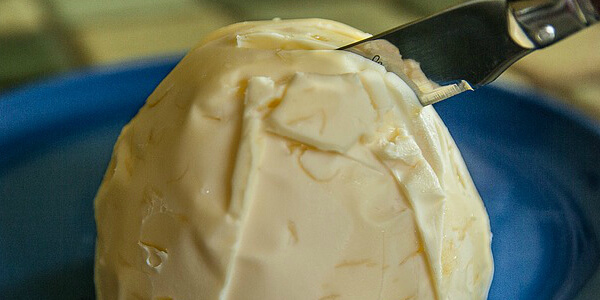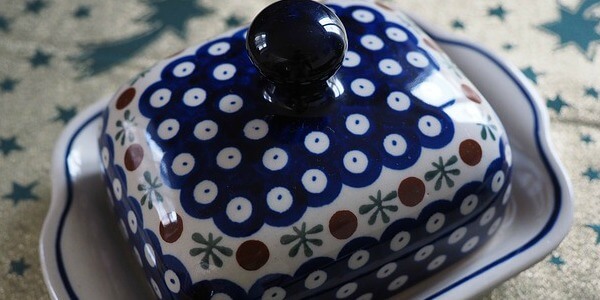
It’s a bit strange these days, how things we used to take for granted are now special, more valuable, and unfortunately harder to get. Think about organic and quality food, for example. Our grandparents didn’t think about organic food because everything they were eating was organic. The same holds true for stress levels, noise pollution, global warming. Therefore, the problems we need to solve these days are quite different from what anyone down the history would have thought of.
The curious case of the butter conditioner is a scaled down example. Many people in the UK, Australia, and New Zealand complained about the fact these are no longer installed in modern fridges. People believe conditioners were part of their national identity. They were unique and loved, so removing them in search of new markets was a form of betrayal.
This is why, I’ve decided to take a close look and find out what butter conditioner is, when was it invented and why people love them so much.
History of The Butter Conditioner
The butter conditioner’s patent was published on Dec 25, 1951. The inventor Nave Alfred E filled two papers for the patent a year earlier. His goal: “An object of this invention is to provide a new and improved food storage receptacle for storing butter or the like which may quickly and easily be removed from the refrigerator cabinet for the purpose of cleaning.” The full patent with all the diagrams and explanations, you can find here.
A few years later, different manufacturers saw the potential in the idea and started manufacturing it. One of the companies to make it was “Fisher & Paykel”. Pretty fast people got so used to the conditioner, they started experiencing it as part of UK, New Zealand, and Australian daily life and culture.
The Butter Conditioner’s Case

However, only after they disappeared, they became a symbol. This piece of simple usable technology was something no other nation had and something people decided to protect.
That social energy took specific shape in the letter of Gary Black to the manufacturers. His 23 years old fridge broke down and he couldn’t find a new fridge with a conditioner. He accused them of selling this piece of society culture to their corporate interests. He also asked about the price of the appliance which did not go down, even though it was missing a functionality. This open letter got the attention of the media and attracted many supporters who wanted their butter conditioner back. The answer from the company was that they needed to make the change as this is the only way for them to meet new ecology regulations and they found it inefficient to have a heat generating device inside the fridge.
Who’s right and who’s wrong? Should we just move forward and get in with the times or there are small things with great meaning which define us? Are big companies really dictating our lives today or there is still a place for individualism and even romanticism? Is there a place in today’s world for some inefficiency, a small “heating device in our fridge” which, however, makes us feel better? This is up to you to decide. The whole correspondence can be found here.
People discuss the problem and look for solutions. Some forum users share that they want to have the conditioner but cannot find one. They also share their thoughts on the effect this has on local farmers who used to produce milk. Now, according to these people, the milk will be less required and people will look for butter alternatives like margarine.
So how to store the butter if we don’t have the conditioner anymore?
NB: There are different types of “real” butter. Irish and French butter, spread easier and don’t require so much conditioning. Some US brands are harder and not so spreadable. Some people believe they can store food in their oven as it is sealed and closes well, however, this is not a good idea. When not turned on, the oven is just a drawer. Still, if you decide to use the oven as a storage department, make sure it is clean. To see what a clean oven looks like, how professionals clean the oven and why, see these oven cleaning professionals page for more information on that topic.
The Butter Bell
The butter bell is a product made of two things – a butter bell and a container. You fill a bell with butter really tight, fill the container with water and turn the bell into the container.
Tip: if you do not pack the butter nice and tight it may fall out in the water.
Disadvantages: you should keep the butter at a room temperature. You cannot expect spreadable soft butter with butter bell if you leave it in the fridge. For more information on the butter bell, see this video.
The Butter Dish

These come in all shapes and sizes, they are designed to store butter but are just simple dishes with a cover. People usually prefer glass, steel, and porcelain, but avoid plastic dishes as they are harder to clean, not quite healthy and don’t last long. Butter dishes cannot condition the butter, they just store it. However, there are old terracotta butter dishes which are great for summer as they keep the temperature lower than outside. Unfortunately, they can hardly keep the butter in a good condition during the winter, though.
Tip: in order for the butter to last longer, make sure the dish is clean.
Temperature Controlled Butter Dish
Now, these are quite more sophisticated than butter conditioners. They look great, cost around £20 and allow the temperature to be adjusted. People seem to love them – they are easy to clean, well made, and at a reasonable price. These butter dishes allow you to control the temperature and therefore help to achieve that great, spreadable butter.
Disadvantages: in order to work, they need to be connected to the electrical network. There’s used to be a model with batteries which was a great substitute to the conditioners but that model is no longer into production. So for now, these butter conditioners must be constantly plugged in and therefore you cannot put them in the fridge and expect to do their job.
Microwave Softening
Of course, the obvious way to soften the butter is to put it in the microwave for ten seconds. At least that’s what we all do. This method does work, but there are numerous researchers stating that microwaves are not healthy. Microwave softening is also miles away from convenience – during the summer days, you will have to keep the butter in the fridge, take it out, put it in the microwave to melt and only then use it. It’s not a big of a problem but there were quite easier ways in the past.
Counter Top Solution
You can keep some of the butter in a butter dish on the counter top, use it and enjoy it, and the rest of the butter can stay in the fridge. Once this small portion is gone, take some more from the fridge and put it on the counter top again. This is what all moms and grandmothers used to do back in the days and it does the job.
Other Ways to Condition Butter

Make your own easy to spread butter, by mixing it with olive oil and salt. You can grab a portion of butter, cut it into pieces and throw it in the chopper, add some olive oil and salt, and let the machine do its magic. Soon you’ll have a nice, delicious, and spreadable butter which won’t go hard even if you put it in the fridge.
Tip 1: do not leave the butter at a room temperature as it will start to separate. In the fridge, it can last up to three months, which is more than enough.
Tip 2: make sure the dish you’re using to put the mixture is clean and dry. Water may ruin your butter mix.
Tip 3: according to many chefs, mixing olive oil and butter is not a good idea as they are different in origin. Butter is of an animal origin and the olive oil is a product of a plant origin.
So, here, I hope this article presents all points of view on the butter conditioners, give all the needed information and provides all the needed solutions. If you have any more ideas, please feel free to share them.


